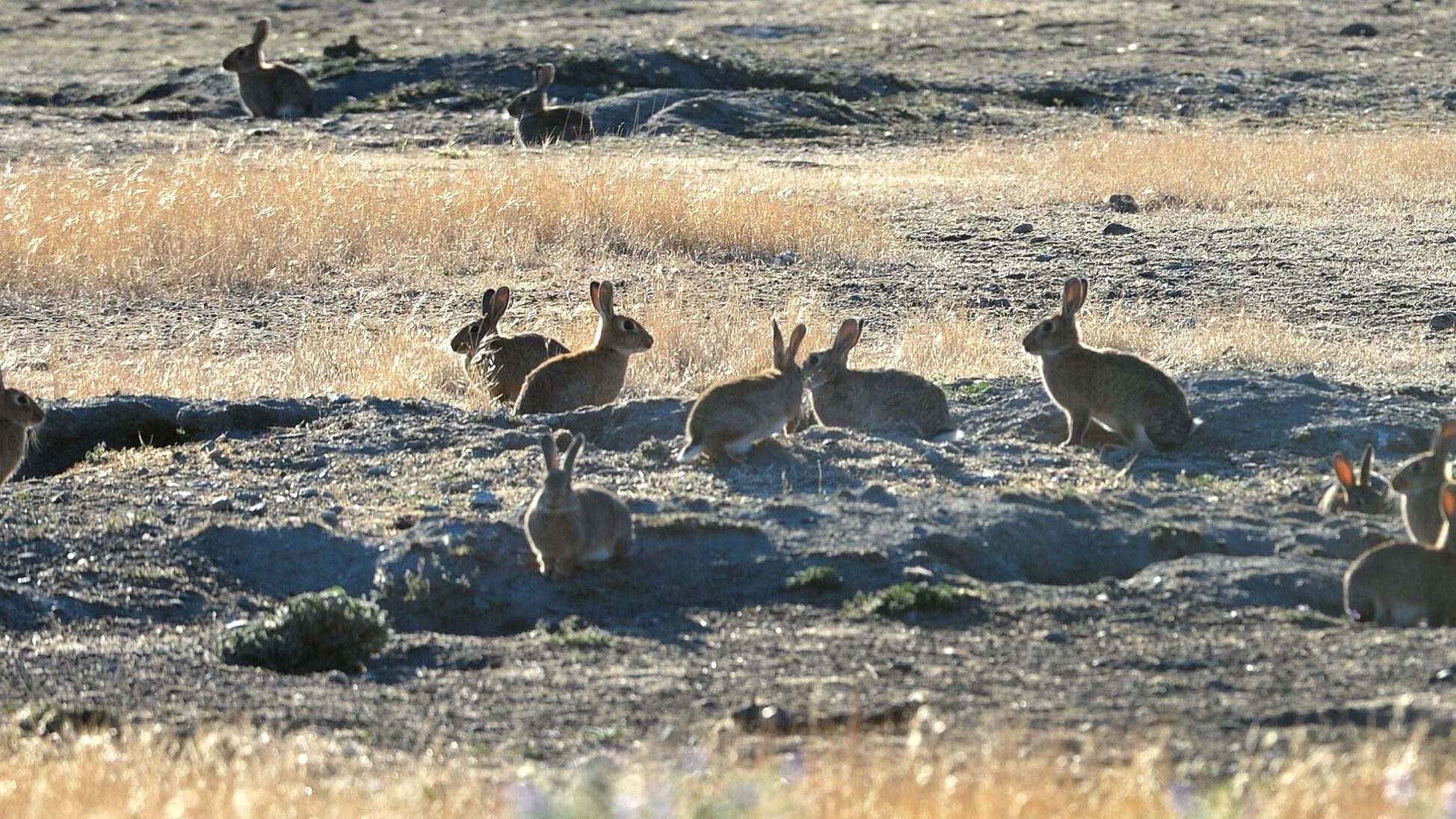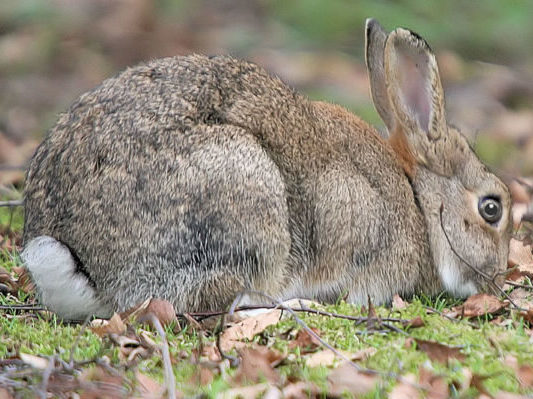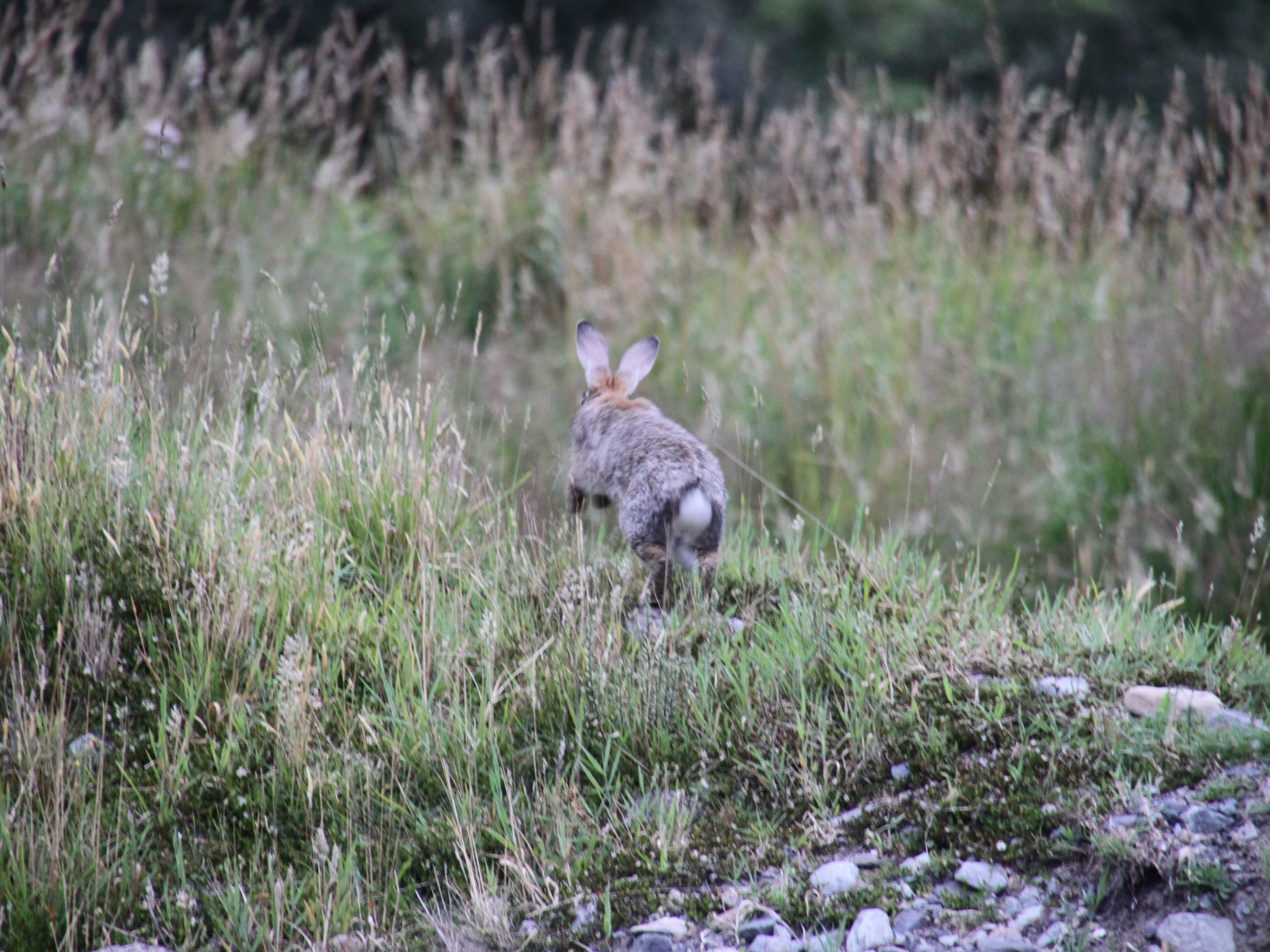Controlling introduced mammal predators can lead to an increase in native birds, lizards, and invertebrates – but could fewer predators also lead to an unwelcome increase in rabbits? You might expect so, but in Aotearoa New Zealand rabbit populations usually influence the number of predators, rather than the other way round.

Let’s look at the evidence
Rabbit control is time-consuming, expensive and difficult. Landowners want to know how changes in the number of nearby predators might impact the rabbit populations on their land.

The Hawke’s Bay Regional Council recently asked Mandy Barron at Manaaki Whenua – Landcare Research to analyse rabbit data collected from two local ecological restoration areas.
In Cape to City, nighttime spotlight counts of rabbits showed that predator control decreased the number of rabbits, though this decrease didn’t show up in camera trap counts. In Poutiri Ao ō Tāne there was an increase in rabbit numbers linked to predator control, but this was not statistically significant.
These inconclusive results are actually good news for landowners, Mandy tells us.
“The fact that there was no clear effect, and even within those two sub-areas there were conflicting results, should be reassuring in itself.”
In her report, she suggests that “the failure to find a consistent effect is because the influence of predators on rabbit population is minor compared with other sources of population limitation or regulation.”
Control the rabbits, control the predators
Grant Norbury, also a senior scientist from Manaaki Whenua – Landcare Research, explained to us what those other sources might be.
“When conditions are really favourable for rabbits, they tend to be driven by what we call bottom-up processes – things like the climate, food availability, soil type, diseases – rather than predation. Predation is what we call top-down.”
Grant says that while there can be circumstances in Aotearoa New Zealand where rabbit increases would be possible with predator control, it has to be exactly the right mix of circumstances. “By and large rabbits respond to other things, not predators.”
So reducing the rabbit population seems like a win-win – it leads to fewer rabbits, and then to fewer predators. But as Mandy points out, predators still have to eat, and when one food source dries up they will look elsewhere.
“If you control rabbits, in theory in the long term that will reduce predator numbers, but when there are all these hungry predators around they might prey-switch and start taking the animals you’re trying to conserve, because they’re hungry and they can.”
Each time the rabbit population increases and then decreases more prey-switching can occur. To give native animals the best chance of thriving, once the rabbit population is low, it’s important to keep it low.
The future for rabbit control

What does all this mean for the predator free movement? Knowing how important rabbit populations are to predator populations can help us achieve our predator free goals, and allow our native wildlife to flourish.
Grant says it would be useful to research more into how rabbit control could supplement predator control efforts, particularly in the damper parts of Aotearoa New Zealand where conditions aren’t so favourable for rabbits. Rabbit populations in less ideal environments are more affected by the top-down processes, so it’s in those areas that predator control may have more of an impact.
“Central Otago and Marlborough are more driven by bottom-up processes, so it’s less likely that predator control is going to have an effect in that environment.”
The science is pretty clear – in Aotearoa New Zealand rabbits are mostly driven by factors such as disease, food availability, and climate, not by top-down predators. This means that any effect predator control has on rabbit numbers will generally be small.
It’s great news! This research should reassure landowners that predator control won’t increase their rabbit populations. Mandy recommends that landowners monitor their rabbit numbers every year, to make sure everything is on the right track.
As for the future, Grant suggests reframing how we think about the relationship between rabbits and predators.
“Rather than seeing predator control as a risk to rabbit populations, we should be viewing rabbit control as a tool to help remove predators.”
Learn more in this webinar where we chat with Grant Norbury about rabbits and predators

